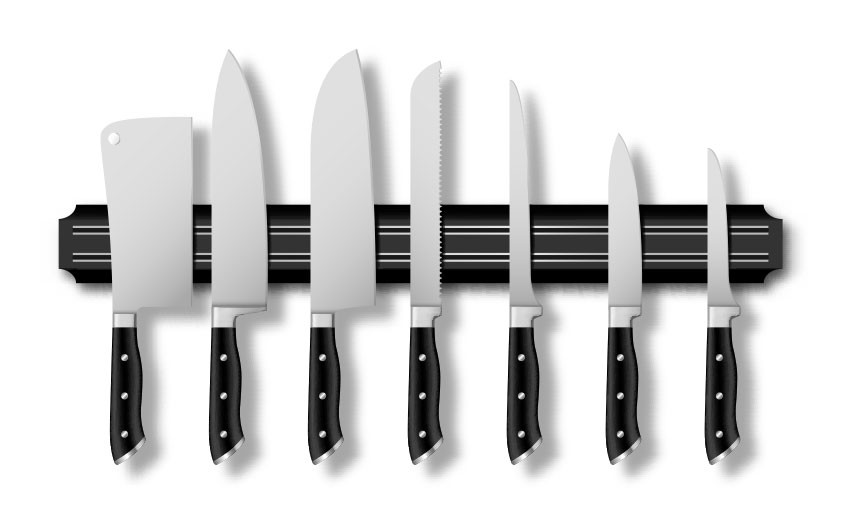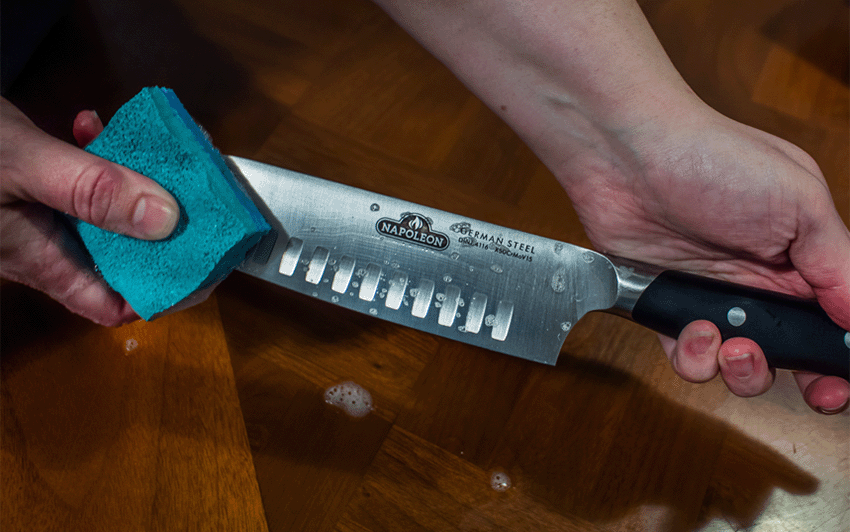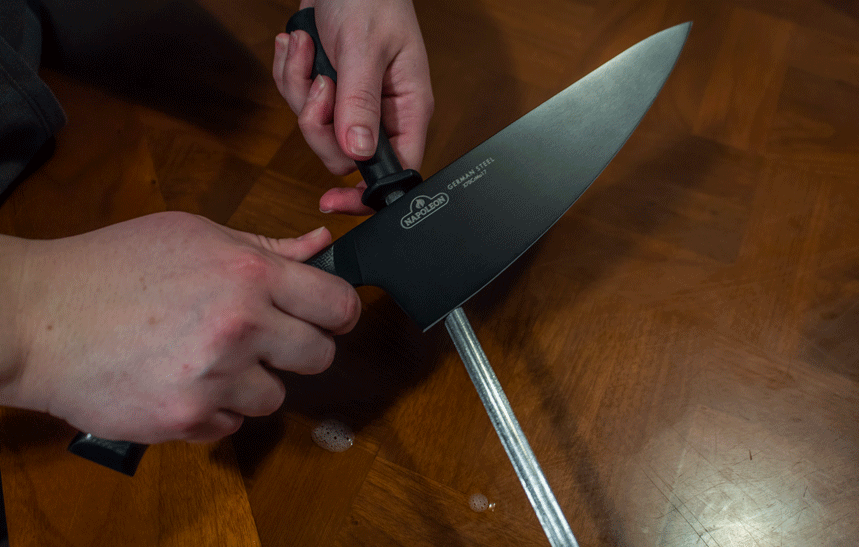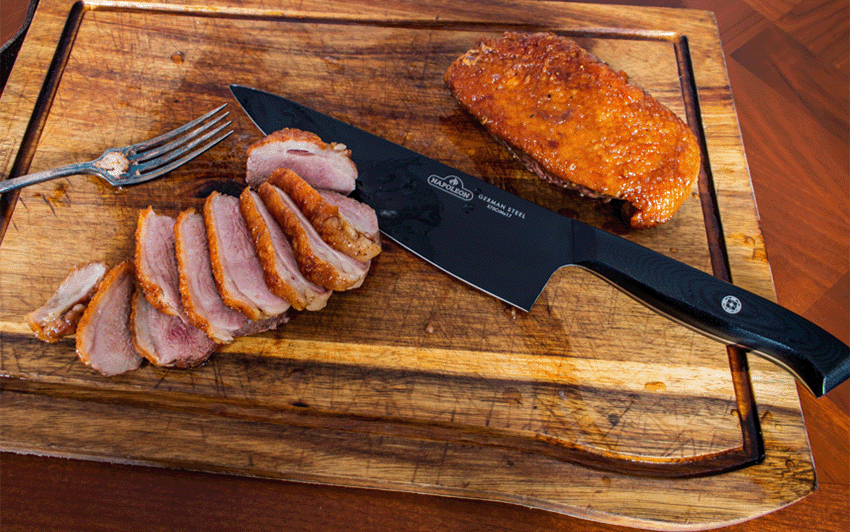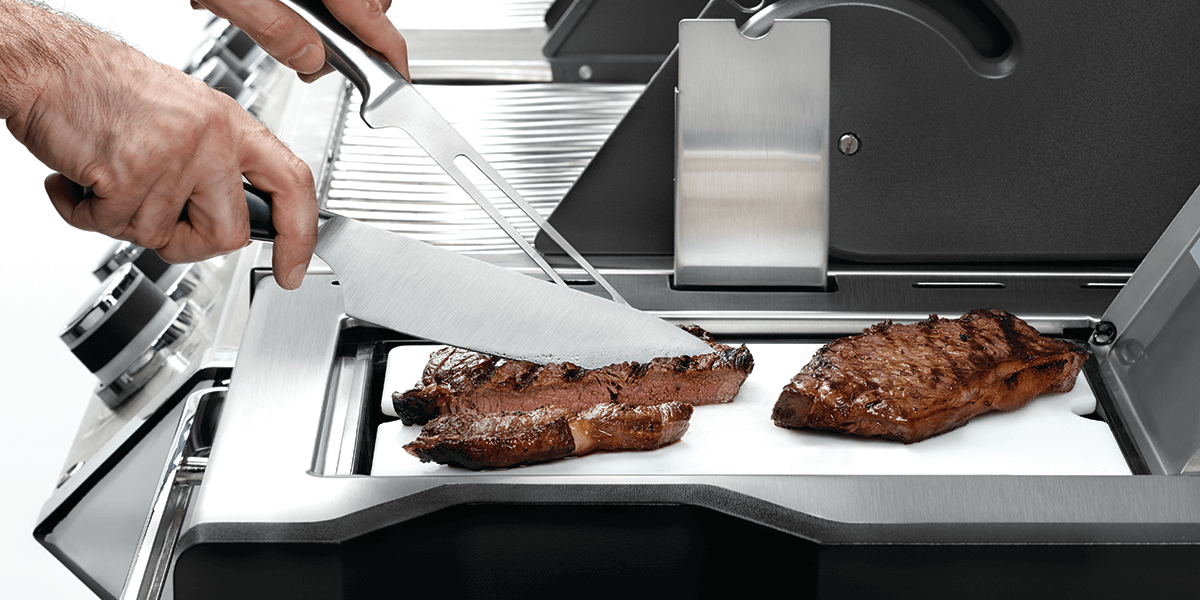
Know Your Knives - A Guide to Kitchen Knife Maintenance
By now you should know about the different shapes and uses of knives, the parts of a knife, and how to choose the best knives for your needs. In this article of the Know Your Knives series, we’re guiding you on kitchen knife maintenance and ensuring those beautiful blades stay sharp and useful for as long as possible.
Storing Your Knives
One of the key things in keeping your kitchen knives, or any useful tools for that matter, in excellent condition is to store them properly. Kitchen knives should never be kept loose in a drawer, not only is it a safety hazard for the person reaching for a utensil, it will dull and damage your knives quickly. Storing in a drawer with other things can also lead to rust and other sorts of damage. The exception to drawer storage would be a drawer with built in holders for your knives.
Wood Block
Knives should always be stored in a space that was designed for them. A knife block is a good place to start. Most knife blocks are wooden and feature slots for specific knives. There can be drawbacks to these. Residue and bacteria can develop and build up in these slots, and if your block doesn’t come apart, it cannot be cleaned. This is dependent on the placement of your knife block, keeping it from the stovetop and heavily trafficked areas will help to keep your traditional knife block cleaner longer.
Uniblock
An alternative to the traditional knife block would be a universal knife block. This is a block that contains a multitude of straws or rods that hold your knives in place. These are handy because you can store a wide variety of different sized and shaped knives as well as other tools, like your honing steel and kitchen shears. An added benefit is that these blocks can be disassembled and cleaned, and the wood surface won’t dull blades over time.
Magnetic Storage
Magnet Blocks can be countertop or wall mounted. Wall mounted units store knives out of the way and out of reach of children, and this can free up counter space when compared to the bulkier block. You want to get one constructed with high quality magnets with a nice cover, though, because the inexpensive ones with exposed magnets can damage the blade as it is dragged across the surface of those magnets. The inexpensive ones are also prone to failure as the magnet degrades. Sanitation-wise, these are the cleanest way to store your knives.
Knife Bags & Rolls
Knife bags and rolls are another way to store and manage knives. If you travel with your knives like I do, a knife roll is a safe and compact way to bring your knives wherever you need them. Higher quality rolls are also quite pricy. Most bags store your knives with the handles in pouches, leaving the blades exposed. This is not very safe for fingers or for the blades. It is recommended that you get sheaths or covers if you plan on storing your knives in this fashion. If you do plan to keep knives in a drawer, sheaths or covers would be an ideal way to protect the blades from damage as well.
Cleaning Your Knives
Cleaning knives can be a scary thought for some. However, it is not recommended that you use the dishwasher, even if there is a specialized rack for your kitchen knives in it. Instead, a knife should be washed immediately after use and dried right away. This ensures that you will always have a good knife at the ready, prevents rust and spotting, and most importantly keeps your edge sharp longer.
Sharpening Your Knives
A properly stored and cleaned knife will retain its edge for six to twelve months depending on the frequency of use and the cutting surface you are using it on. Sharpening your blades is an artform. Steve Judson from the Barrie Sharpening Centre is a second-generation sharpener, having taken over the business from his father. In his time as a sharpener, he continues to learn, honing his craft, and shared some insights with me.
Honing Steel
You know that metal rod that came in your knife block? If you bought or have a block that came off the rack from a store, it likely came with this. It is a thin metal rod with a sturdy handle. It’s called a honing steel. This will not actually sharpen your blade. The steel can be used prior to cutting and straightens out your knife’s cutting edge. When a knife is used, that thin edge will imperceptivity curl over, rounding off the sharp edge of the blade.
To use a honing steel, hold the rod out straight. Hold the knife with the blade edge facing you and pull it away from you up the steel up to six times per side. Depending on if you have a dual edged or single edged knife, you can do this to both sides of the blade. While this is a great way of maintaining your knives, eventually the edge of the blade you are un-rounding over will break off. This is when you will need to get your knives sharpened.
Sharpening
While you can do it at home, sharpening your knife properly comes from much patience and practice. If you have top of the line, expensive knives, and no experience in sharpening, a trained professional would be the way to go in this case.
There are a few different types of sharpening tools or configurations available for home use. There’s the small thing that you probably have in the back of a drawer. A handheld sharpener is small and can be inexpensive. They can give you a sharper edge, however, unless it has several different slots with different grits, you will not get a fantastic edge on that knife. These require a steady hand and even pressure. Start from the coarsest grit (like sandpaper) and work your way up to the finest.
The better option for at home sharpening would be a Lansky system, or similar. This is setup that is clamped to the worktop and holds your knife at the correct angle to sharpen the edge. It can come with or you will need to procure wet stones, these will slot into a holder and you use that to draw the stone up the edge of the blade in a precise and fluid motion. Using this will require some practice and patience as you have to go through several grits before getting that razor sharp edge.
A full wet stone setup is another option. Instead of the Lansky holding and angling the blade for you, you are in charge of the knife. Set on a table or work top, you need to draw the knife edge over the stone in a fluid motion. Again, this is done in several passes, slowly going up in grit. This is the hardest and takes a lot of practice. The key is holding your knife at the perfect angle so as not to damage the face of the blade, grinding away only the damaged parts of the cutting edge.
Knife Tips & Tricks
These tips and tricks should help you keep your knives sharp and useful for as long as possible while staying safe:
-
Keep those knives sharp:
A sharp knife requires less force to cut through something. When using more force, you run the risk of an accident as food may slip out from under the knife or you could accidentally come down too hard on appendages. -
Ideal cutting surface:
Glass, stone, and ceramic are terrible cutting surfaces and will dull a knife in the blink of an eye. Plastic cutting boards are not much better as they can scratch easily which can damage knives and they harbor bacteria if not well sanitized. Ideally you should use wood boards, end grain cutting boards are durable and partially self-healing. They are safe and durable surfaces for cutting all foods on.
-
Use the right knife for the job:
If you are working and things feel awkward, you may not be using the right knife for the job. This can lead to accidents. Read more about the different types of knives and their jobs. -
Always cut on a flat and stable surface:
Ensure that your cutting board won’t go anywhere by placing a lightly damp cloth underneath. When cutting anything that tends to roll away on you, slice a small section to create a flat surface before beginning. -
Clean Boards:
It can be tempting, but you shouldn’t use your knife to scrape the board. You can damage your wood board this way, but more than that, you are damaging your knife edge. A bench scraper provides a great alternative to a knife for picking up food cleaning your board off while working.
Knowing the tools that you use to produce delicious meals is key to cooking. Hopefully the tips and tricks you learned guided you to better kitchen knife maintenance. Do you have any pointers in the kitchen? Share your insights, stories, recipes, and photos with us on social pages like Facebook and Tiktok using the hashtags #NapoleonMoments and #NapoleonGrills. Tell us about your favorite knives, tools, accessories, or kitchen tricks.

